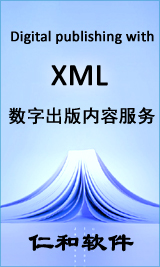WANG Qingfeng
,
CHAI Feng
,
CAI Jianwei
,
PAN Tao
,
SU Hang
钢铁研究学报(英文版)
The kinetics of εCu particle dissolution in the matrix of heat affected zone (HAZ) during welding of a coppercontaining steel was determined by assembling the welding temperaturetime program into a modified Whelan′s solution. The particle dissolution dependence on the degree of “superheating” above the equilibrium transformation is demonstrated from the model. In terms of volume fraction of particle dissolution, the HAZ may be classified into three zones, including the undissolving zone, the partially dissolving zone, and the completely dissolving zone, respectively. The numerical solution was in good agreement with the experimental examination finding. The results of model can be used to quantitatively map the εCu dissolution zone dependence on the peak temperature of welding thermal cycles and understand the evolution of this transformation during welding.
关键词:
εCu;particle dissolution;kinetics;welding;steel
CHAI Feng
,
YANG Caifu
,
SU Hang
,
ZHANG Yongquan
,
XU Zhou
钢铁研究学报(英文版)
The weldability of a lowcarbon copperbearing age hardening steel was evaluated using cracking susceptibility calculation, HAZ maximum hardness measurement, and Ygroove cracking evaluation test. The results show that the hardenability characteristics and cold cracking susceptibility of the steel are very low. The results also indicate that a crackfree weldment can be obtained during the welding of this type of steel even at an ambient temperature as low as -5 ℃ as well as in an absolute humidity lower than 4 000 Pa without any preheat treatment. A slight preheat treatment can prevent the joint from cracking when welding is carried out at lower ambient temperature or higher absolute humidity.
关键词:
copperbearing age hardening steel;weldability;cracking resistance;Ygroove cracking test
CHAI Feng
,
YANG Caifu
,
SU Hang
,
ZHANG Yongquan
,
XU Zhou
钢铁研究学报(英文版)
Effects of Mg on the chemical component and size distribution of Tibearing inclusions favored grain refinement of the welding induced coarsegrained heat affected zone (CGHAZ), with enhanced impact toughness in Tikilled steels, which were examined based on experimental observations and thermodynamic calculations. The results indicated that the chemical constituents of the inclusions gradually varied from the TiO+TiMgO compound oxide to the TiMgO+MgO compound oxide and the singlephase MgO, as the Mg content increased from 0002 3% to 0006%. A trace addition of Mg (approximately 0002%) led to the refinement of Tibearing inclusions by creating the TiMgO compound oxide and provided favorable size distribution of the inclusions for acicular ferrite transformation with a high nucleation rate in the CGHAZ, and a high volume fraction of acicular ferrite was obtained in the CGHAZ with enhanced impact toughness. Otherwise, a high content of Mg (approximately 0006%) produced a singlephase MgO, which was impotent to nucleate an acicular ferrite, and a microstructure comprised of a ferrite side plate and a grain boundary ferrite developed in the CGHAZ. The experimental results were confirmed by thermodynamic calculations.
关键词:
nonmetallic inclusion;magnesium;acicular ferrite;coarsegrained heat affected zone (CGHAZ)






